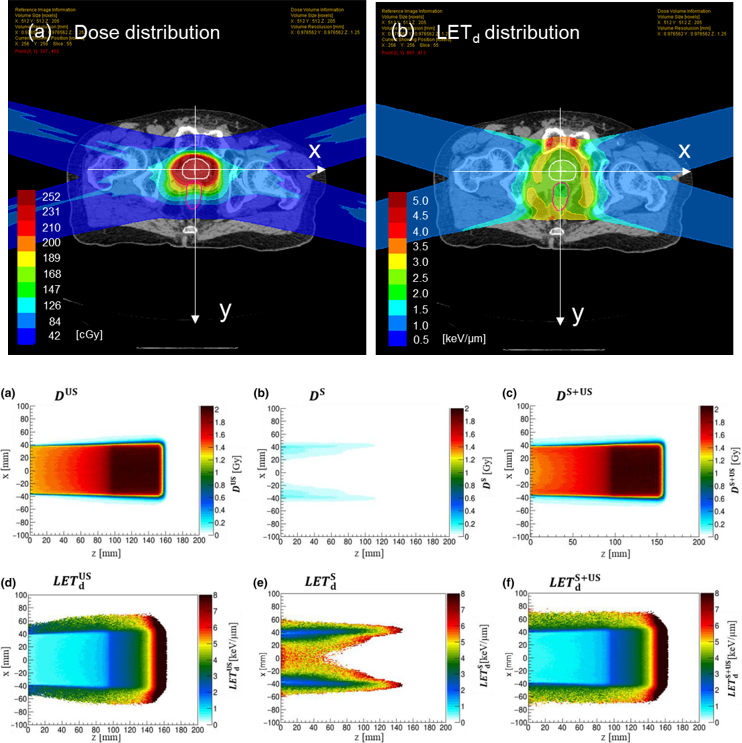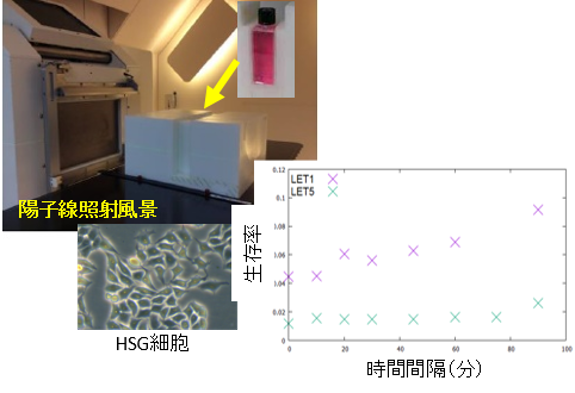Proton dose distribution analysis for biological effects
The effects of proton beam therapy are not determined by the physical dose alone; they are also influenced by various microscopic interrelated factors, including ionization density, a cell’s ability to recover and the cell type. However, today’s therapy takes only physical doses into consideration in nearly all cases, raising the possibility that the effects of proton beam therapy may not be assessed accurately when a tumor is located near an organ at risk or therapy takes a long time.
Our laboratory conducts experiments on proton irradiation on cancer cells in collaboration with the Faculty of Medicine and the Faculty of Veterinary Medicine to develop biophysical models that cover not only physical doses but also microscopic indicators of ionization density and a cell’s ability to recover1,2). Refinement of such models is expected to lead to an accurate prediction of therapeutic effects as well as more effective proton beam therapy with minimal side effects.
Our laboratory conducts experiments on proton irradiation on cancer cells in collaboration with the Faculty of Medicine and the Faculty of Veterinary Medicine to develop biophysical models that cover not only physical doses but also microscopic indicators of ionization density and a cell’s ability to recover1,2). Refinement of such models is expected to lead to an accurate prediction of therapeutic effects as well as more effective proton beam therapy with minimal side effects.
1) S. Hirayama, T. Matsuura, H. Ueda, Y. Fujii, T. Fujii, S. Takao, N. Miyamoto, S. Shimizu, R. Fujimoto, K. Umegaki, and H. Shirato, An Analytical Dose-Averaged LET-Calculation Algorithm Considering the Off-Axis LET Enhancement by Secondary Protons for Spot-Scanning Proton Therapy. Med. Phys. 45 (7) 3404-3416 (2018).
2) K. Ueno, T. Matsuura, S. Hirayama, S. Takao, H. Ueda, Y. Matsuo, T. Yoshimura, K. Umegaki, Physical and biological impacts of collimator-scattered protons in spot-scanning proton therapy. J. Appl. Clin. Med. Phys. 20. 10.1002/acm2.12653 (2019).
2) K. Ueno, T. Matsuura, S. Hirayama, S. Takao, H. Ueda, Y. Matsuo, T. Yoshimura, K. Umegaki, Physical and biological impacts of collimator-scattered protons in spot-scanning proton therapy. J. Appl. Clin. Med. Phys. 20. 10.1002/acm2.12653 (2019).

Simulation of biological dose distribution

Cellular irradiation experiment